Having learned photography in college on an SLR Nikon FM2 in the late 80s and early 90s, then jumping into digital as early as 1999, I never experimented with medium format or shot twin lens reflex cameras until recently—and I honestly don’t really like to use them. They’re bulky, the flipped image is difficult for me to overcome, and I find looking down at a low angle limiting.
My first TLR experience was with a coworker’s father’s YashicaMat I bought a few years ago—the camera that sent me down the vintage GAS rabbit hole to begin with. I fell in love with the way it looked, bought it, and shot it once with good results. Then I got the bug, and the spending began. I mostly buy high-risk, high-reward, no return items from charity auctions, and in short order, I acquired way too many cameras to shoot them all. One was a minty Rolleiflex 3.5F Xenotar, which I shot just once, too—with Ektar film—and I was astounded by the results. But something about that gorgeous, full-featured camera and crank action wasn’t really for me—or maybe it’s just too fancy and I’m afraid of breaking it—and I haven’t shot it again.
At some point in my collecting frenzy, I bought a Tower Reflex, probably just because it looked so pretty I couldn’t resist. It also came with its original ever-ready case looking brand new, which is often a clue to the condition of the camera. When it arrived, I looked it over and cleaned it, and everything worked. Then I tucked it away, and didn’t shoot it until recently. In the meantime, I also collected many Kodak cameras and accessories. One recent such accessory I found on Ebay was a rare, slip-on, German-made Kodak Polafilter hood in excellent condition, designed for the high-quality Retina IIC and IIIC series. By chance, I soon found the filter hood also fit on the Tower’s 32mm outer rim perfectly. This coincidence inspired my imagination, and it was finally time to load the Tower with some color Ektar 100 film.
Weighing just 1.5 pounds, the Tower Reflex 30 is a simple rebadged Sears model made by German Photavit (formerly Bolta) in the mid 1950s. The Vero shutter has just 25, 50,100 and 200 speeds, plus a bulb setting. The taking and viewing lenses are matching Isco-Göttingen Isconar 75mm f/3.5 lenses—which makes the viewing lens dimmer than common 2.8 viewing lenses, but bright enough for me to see well outside. The taking lens aperture closes down to a minimum of f/16.
The door comes completely off for loading. The film loads easily and winds with a large side knob. The winding mechanism has built-in double exposure protection with a red-and-green indicator window on the top right edge above the winder. You have to use the rear red window to properly advance your frames. Unlike most TLRs, this one focuses with a geared focus ring coupling the two lenses, rather than a side knob or crank.
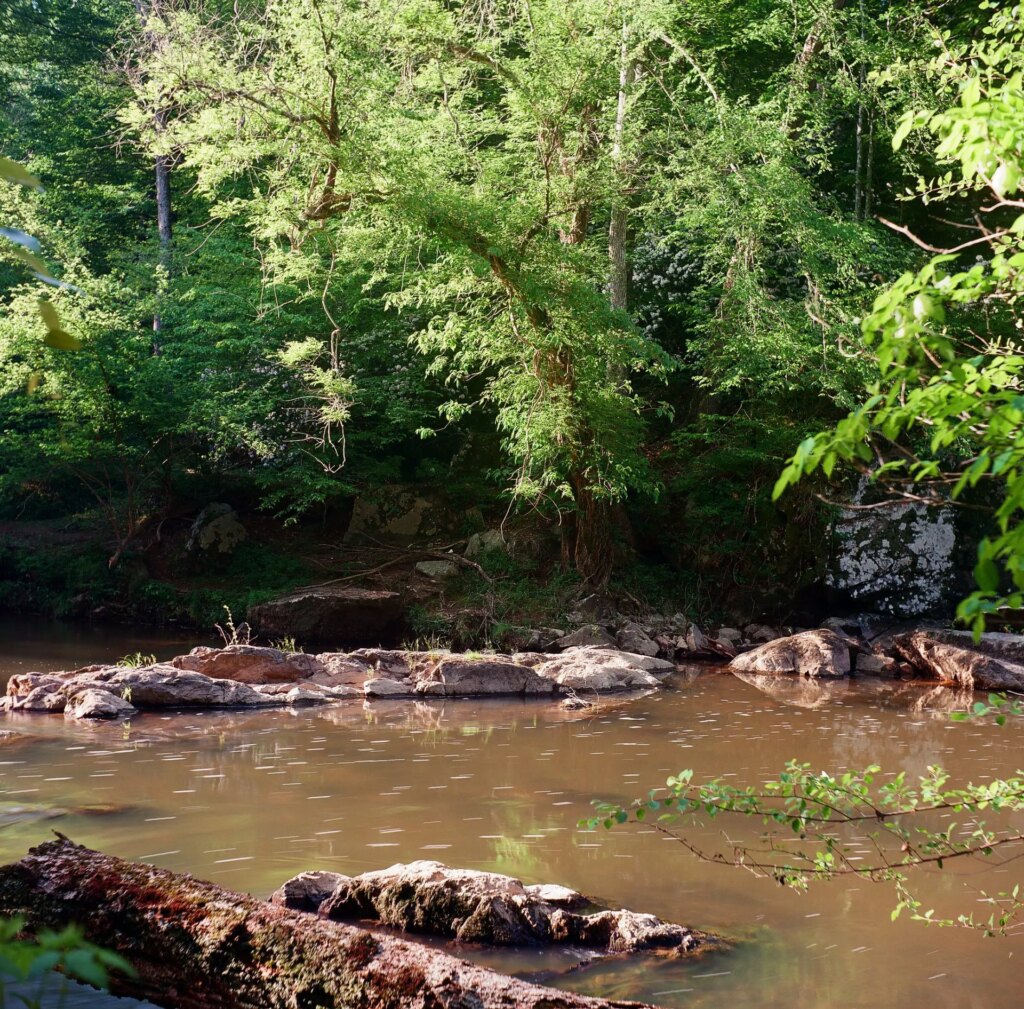
I took the camera from Raleigh to neighboring Durham, NC, for the day. After shooting some pictures at the local river, I headed downtown in late afternoon for some urban scenery. An area called the ‘American Tobacco Campus’ provides multiple parking decks with great views of the northern skyline at that time of day. This is where Lucky Strike cigarettes were made, back when tobacco was still the economic engine of Durham, and the renovated factories and warehouses are now high-tech office space and loft apartments, with many historic elements intact.
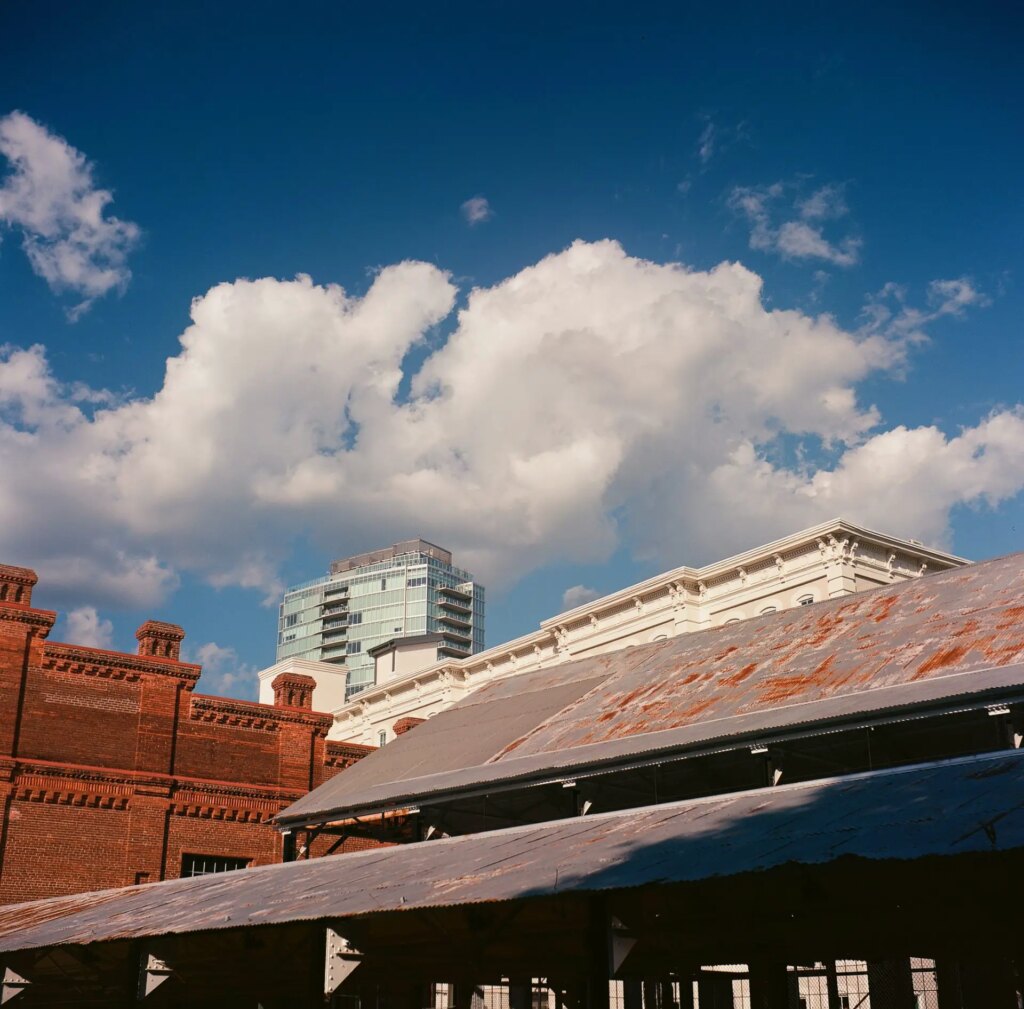
Using the slip-on circular polarizer worked surprisingly well on this TLR—much better than the rangefinders it was made for. Ektar is not a forgiving film, so I metered the exposure at one stop less than the film speed to account for the dark filter, and then simply composed the scene with the filter on the viewing lens, turning the filter for optimal sky darkness, then transferred the filter to the taking lens—being mindful to maintain the correct rotation. I could already see that I was capturing something special. I sent my finished roll to The Darkroom in California for processing and scans, where I always receive quality, affordable, prompt service.
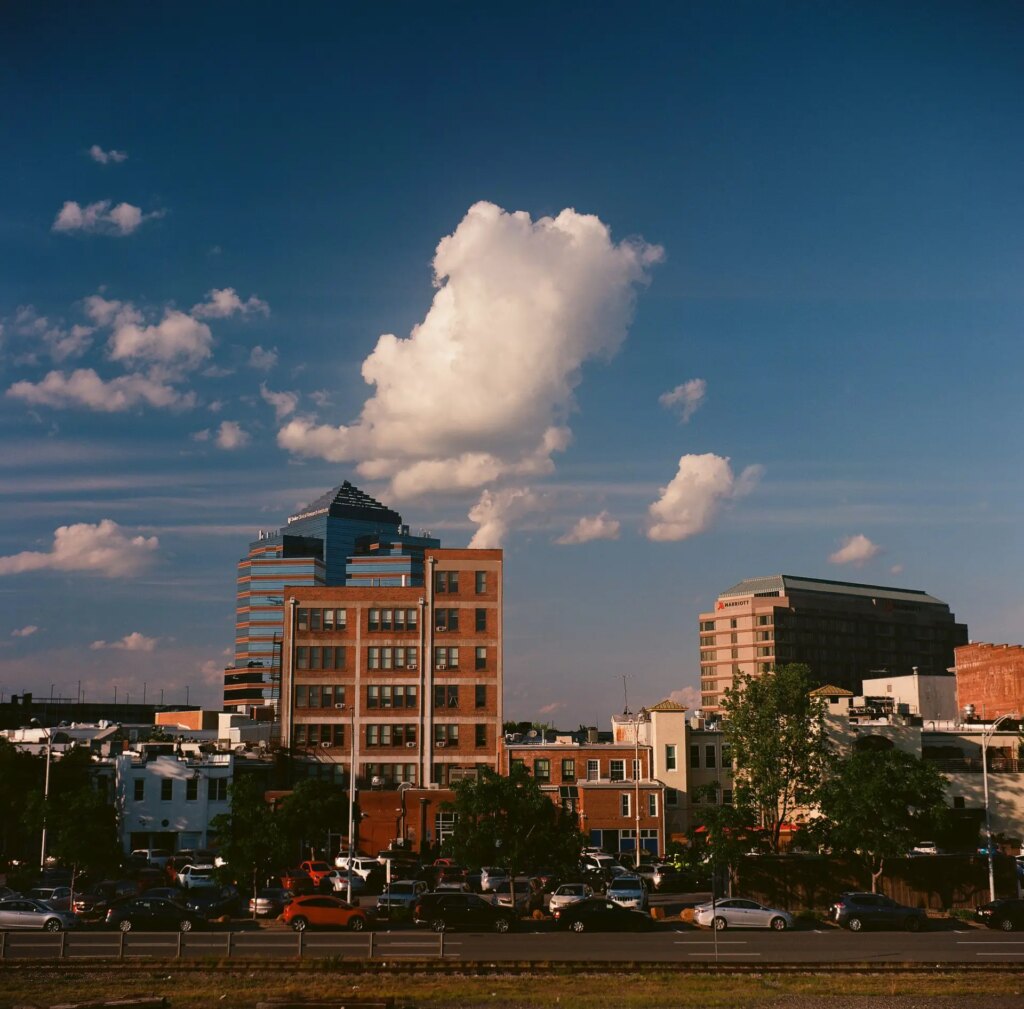
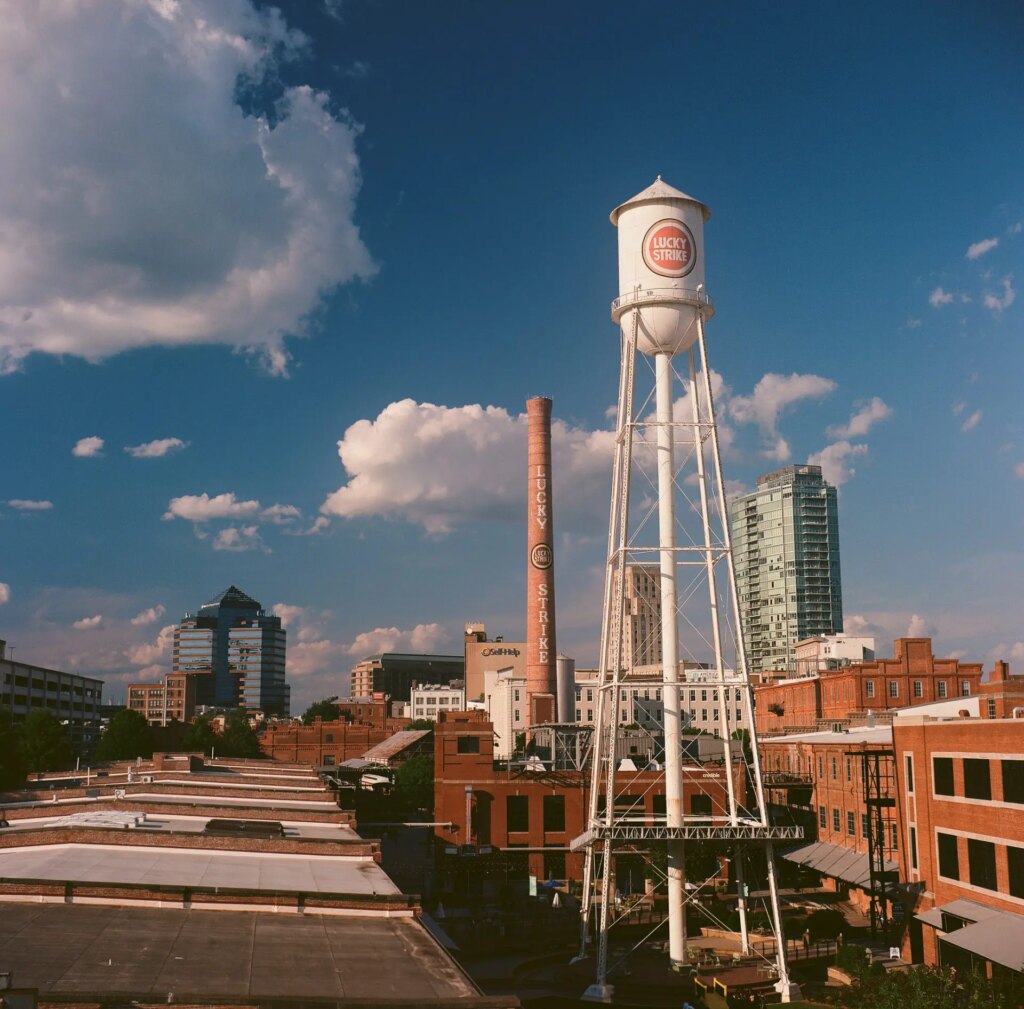
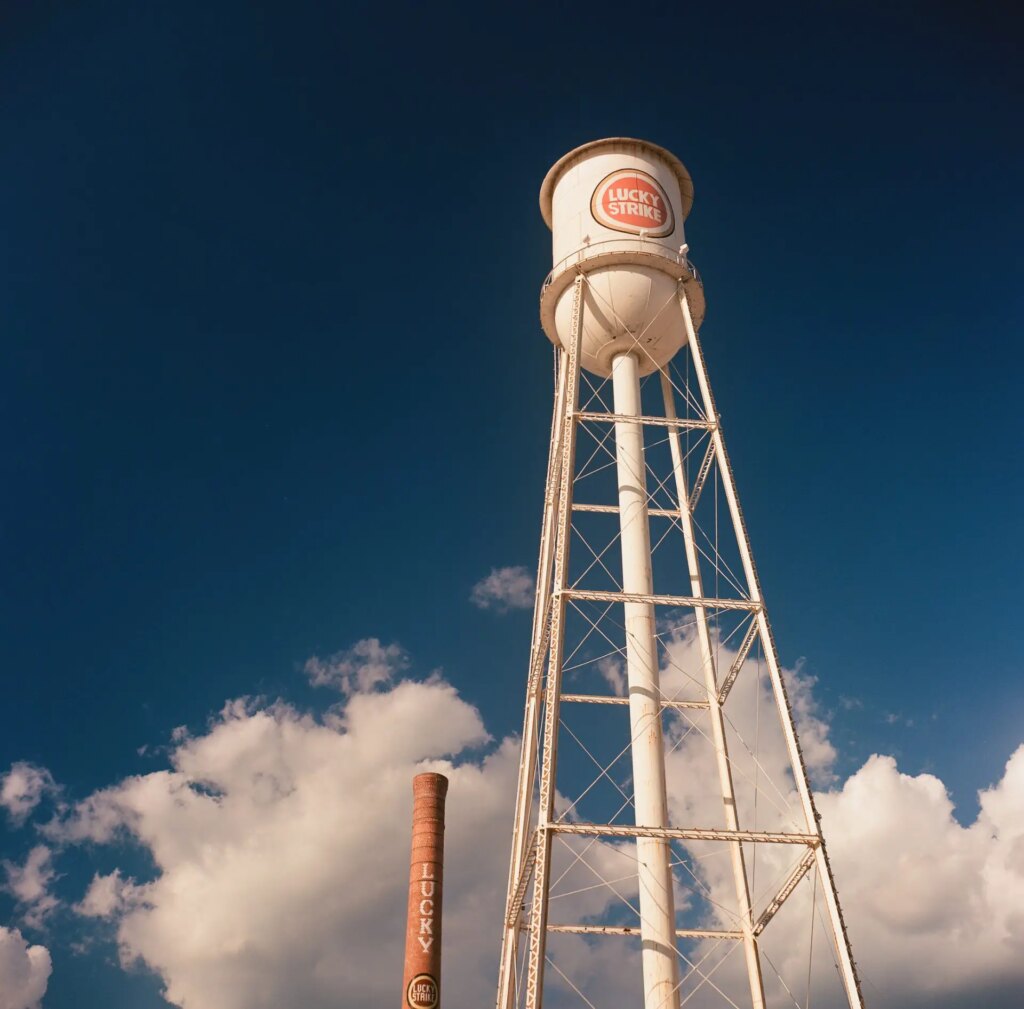
My only complaints about this camera are the post strap lugs, which I can never find a strap for (and I never use ever-ready cases in the field, despite this one being pristine), and the lack of slow shutter speeds—which I would have used for the river shots. I used the bulb setting instead, and opened and closed the shutter as quickly as I could to show a little water motion. But overall, I found this camera’s weight, excellent build quality and simple controls suited me fine—and the slightly wider than usual 75mm lens was surprisingly sharp and perfect for scenery.
Share this post:
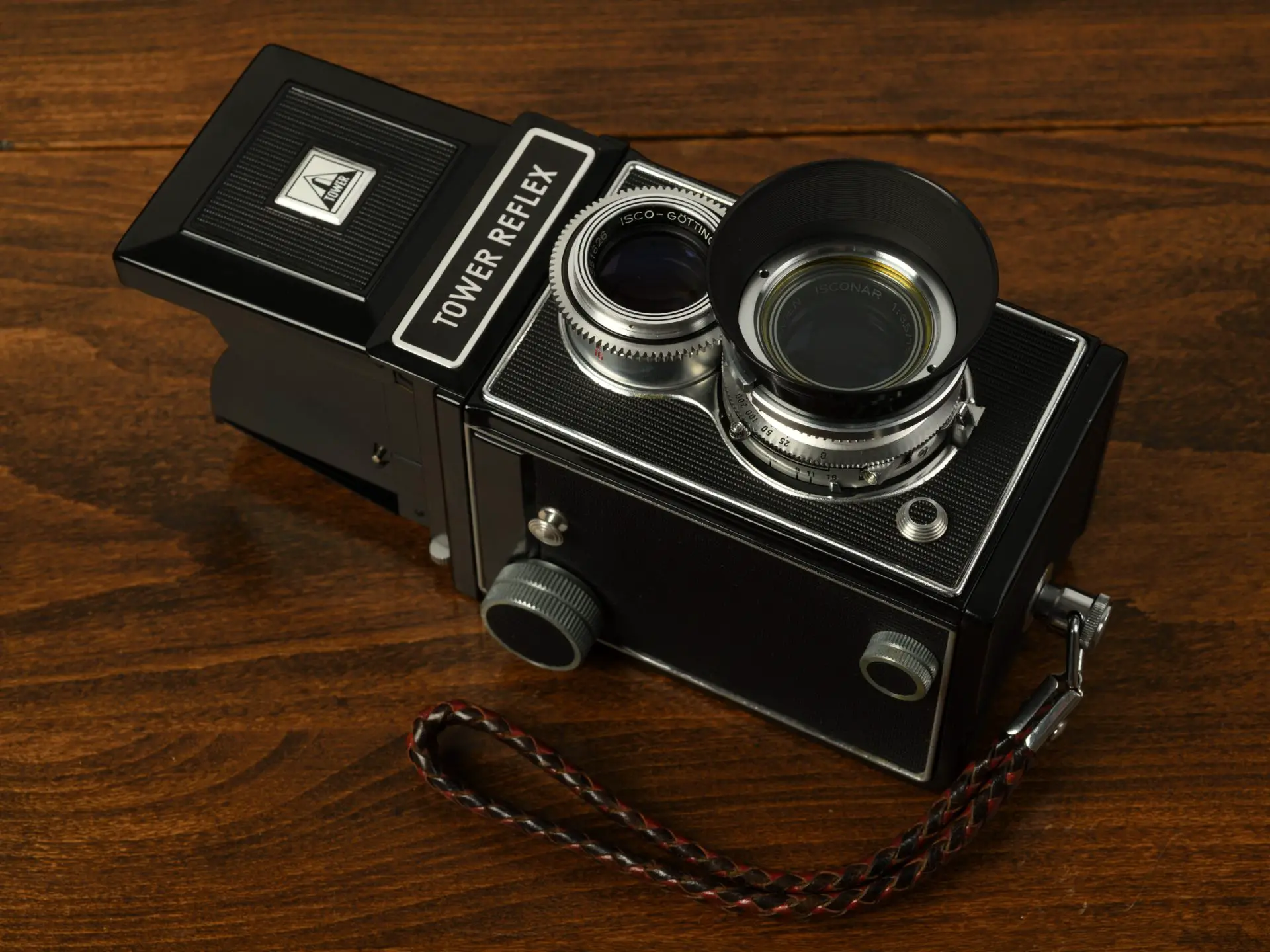








Comments
Kodachromeguy on 5 Frames with a Tower Reflex 30 and a Kodak Polafilter Hood
Comment posted: 25/07/2023
Next project: exercise your Rolleiflex.
Comment posted: 25/07/2023
Comment posted: 25/07/2023
Dave Powell on 5 Frames with a Tower Reflex 30 and a Kodak Polafilter Hood
Comment posted: 25/07/2023
What a handsome thing... and GREAT results too. Looks like a "hidden gem" to me! Good work!!
Dave
Comment posted: 25/07/2023
Scott Gitlin on 5 Frames with a Tower Reflex 30 and a Kodak Polafilter Hood
Comment posted: 25/07/2023
Comment posted: 25/07/2023
Brashtown Czar on 5 Frames with a Tower Reflex 30 and a Kodak Polafilter Hood
Comment posted: 13/12/2023
Comment posted: 13/12/2023
Robert on 5 Frames with a Tower Reflex 30 and a Kodak Polafilter Hood
Comment posted: 23/12/2023
The only other 6x6 TLR reflex I still own is a Seagull WWSC-120 Seagull (3 element lens) sold by Calumet Camera at the turn of the century.
Hadn't intended to take photos with it, but the image quality of the photos you posted changed my mind.
The lens is far better than I expected.
Thanks for posting.
Comment posted: 23/12/2023